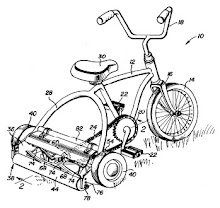- Be speaker. SDM sponsors regular events with real-world speakers reflecting on their experiences. Share your wisdom and make contact with talented students.
- Be a class project. Most of our class work involves longform team projects in product development, market research, and business strategy. Students like solving real-world problems; put a team to work for you.
- Be a judge. Many of our projects and presentations are judged by industry experts. See what we have done and evaluate it.
- Be a visit. Schedule a tour of your facility and show off what you are most proud of. Ask us tough questions about what we see.
- Hire an SDM. Our business skills, engineering understanding, and industrial experience make us a strong fit for any organization.
- Sponsor a thesis or a research project. Develop a relationship with an SDM student and solve your toughest problems.
- Request a research summary. With 20 years of SDM thesis work, chances are that there is already a strong body of research in your area. We can consolidate previous work in a compact, targeted format.
20100223
Industrial Relations
20100208
10 Years of Educational Change and Stagnation
20100201
IAP: Done. Spring: bring it on.
Week 1 is dominated by the LEGO design challenge, with only a small amount of homework distracting from robot-building. In the beginning I left school around 11:30 in order to make the last (T). As the competition drew closer, I stayed until the wee hours and then gave up and brought in my sleeping bag for an overnighter. Following the competition, I was feeling pretty worn-out and slept for 14 hours straight.
Weeks 2 and 3 are shared between design challenge 2 and a bevy of homework assignments. Classes and lectures were scheduled from 8:30am until 9:30pm. The hardest part was scheduling all of my teams for our group work assignments. Usually the only time everyone could meet was during meals or after our late-night lectures. With some serious frontloading of problem sets onto the weekends, I managed to avoid staying up too late and usually made it home around 11.
Somewhere in here I organized a dim sum run to introduce my colleagues to chinatown. Consider that a small victory that a dozen SDMs were able to take a morning off right before the DC2 presentations were due.
By week 4, we were done with most of our classes and only working on design challenge 3. Again, heavy frontloading saved me from doing much problem set work here. I was able to relax, enjoy the scavenger hunt, and even make dinner for my wife.
3 weeks of nonstop activity is not too bad. I have a theory that a human being can endure just about anything for 6 weeks. This first drink from the firehose in a decade reminded me how to be a MIT student in a way which will make spring term seem like cake.
I hope.

